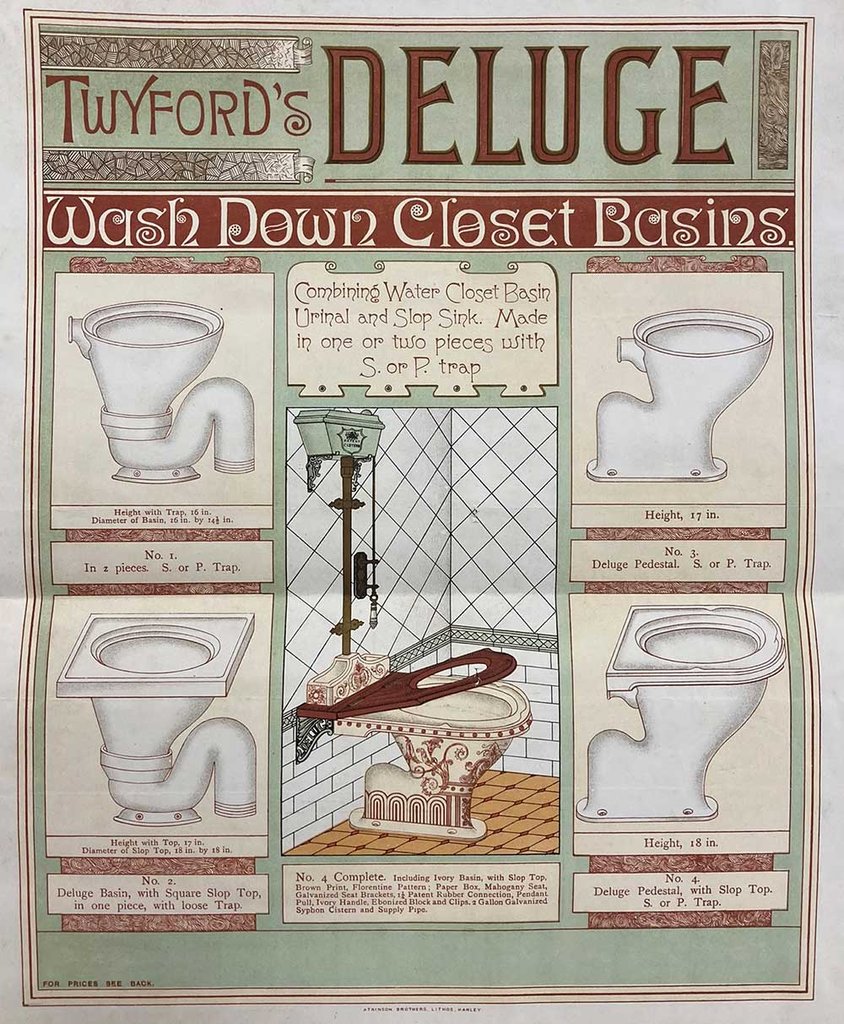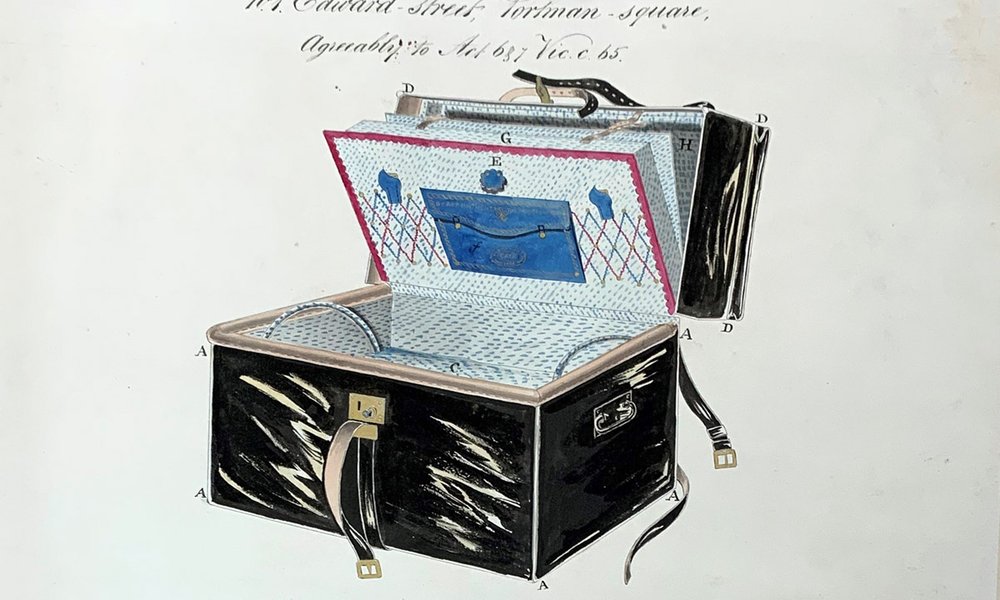Innovations in toilet design
The first UK patent for a flushing toilet, or water closet, was granted in 1775, followed quickly by two more in 1777 and 1778. Later, the Victorians sought to make even this most utilitarian fixture beautiful, producing designs for highly decorative sanitary ware.
Alexander Cumming and the first UK patent for a flushing toilet
Date: 11 November 1775
Catalogue reference: View the record N/A in the catalogue
In 1775, Scottish watchmaker Alexander Cumming obtained the first UK patent for a flushing water closet. Cumming’s invention centred around the creation of the S-shaped trap, or U-bend, in the toilet’s pipe.
His patent, number 1105, described how his improvements related to ‘the shape of the pan or bason, the manner of admitting the water into it, and on having the stink trap so constructed that its contents shall or may be totally emptied every time the closet is used’.
However, houses weren't equipped with indoor plumbing or running water, and the waste that was flushed away by Cumming's water closet had no sewers to flow into. Earth closets remained the more popular and common form of waste disposal for more than a hundred years, even once the Victorians constructed underground sewers in the second half of the 19th century.
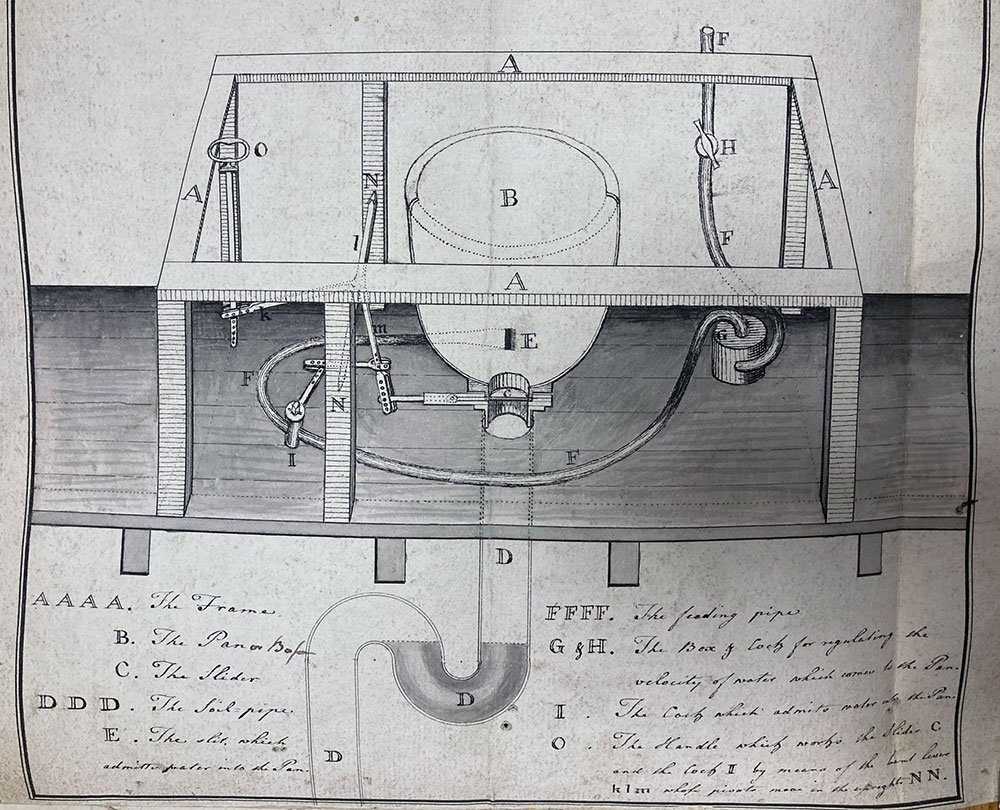
Lemuel Prosser’s UK patent for a plunger operated flushing water closet
Date: 14 July 1777
Catalogue reference: View the record N/A in the catalogue
In 1777, Lemuel Prosser (mis-named Samuel in some online articles) obtained the second UK patent for a flushing water closet. Prosser was a plumber living in St Martin's in the Fields in London, and his patent, number 1160, came less than two years after the first UK patent for a water closet was granted to Alexander Cumming.
Prosser's patent described his invention as ‘A water closet, upon an entirely new construction, which will always remain free from any offensive smell.’
It used a floating valve mechanism which regulated the water level in the tank and a plunger which the user lifted to cause the flush. The plunger was on top of the outflow meaning waste could sometimes get caught in it.
Most domestic waste was collected in cesspools and privy pits, and the following century saw various patents awarded for inventions relating to the emptying and cleaning of these facilities.
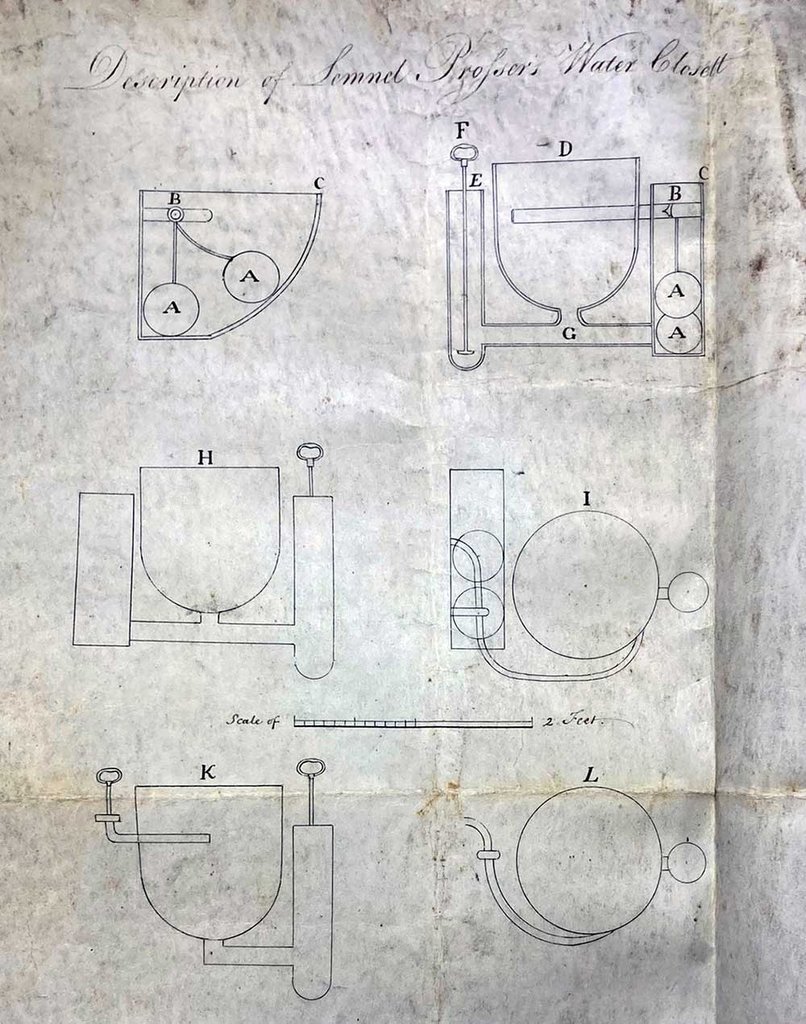
Joseph Bramah’s UK patent for a handle operated flushing water closet
Date: 27 January 1778
Catalogue reference: View the record N/A in the catalogue
Only six months after Lemuel Prosser, Joseph Bramah lodged his design for a water closet in January 1778. It featured a more efficient flushing system that used pressurised water to remove waste from the bowl.
The description of Bramah’s patent number 1177 explained that ‘two valves are simultaneously acted upon by the movement of the handle. The one valve is placed under the bottom of the basin, and when closed retains any water that may be therein, thus cutting off all smell.’
Bramah was born in Silkstone, South Yorkshire, but later moved to London where he worked installing the water closets designed by Alexander Cumming. These had a tendency to freeze in cold weather and Bramah's patented design addressed this problem directly.
Bramah was a prolific inventor, celebrated for his 1795 hydraulic press. He also invented the ‘Challenge lock’ known for its ability to defeat lock pickers.
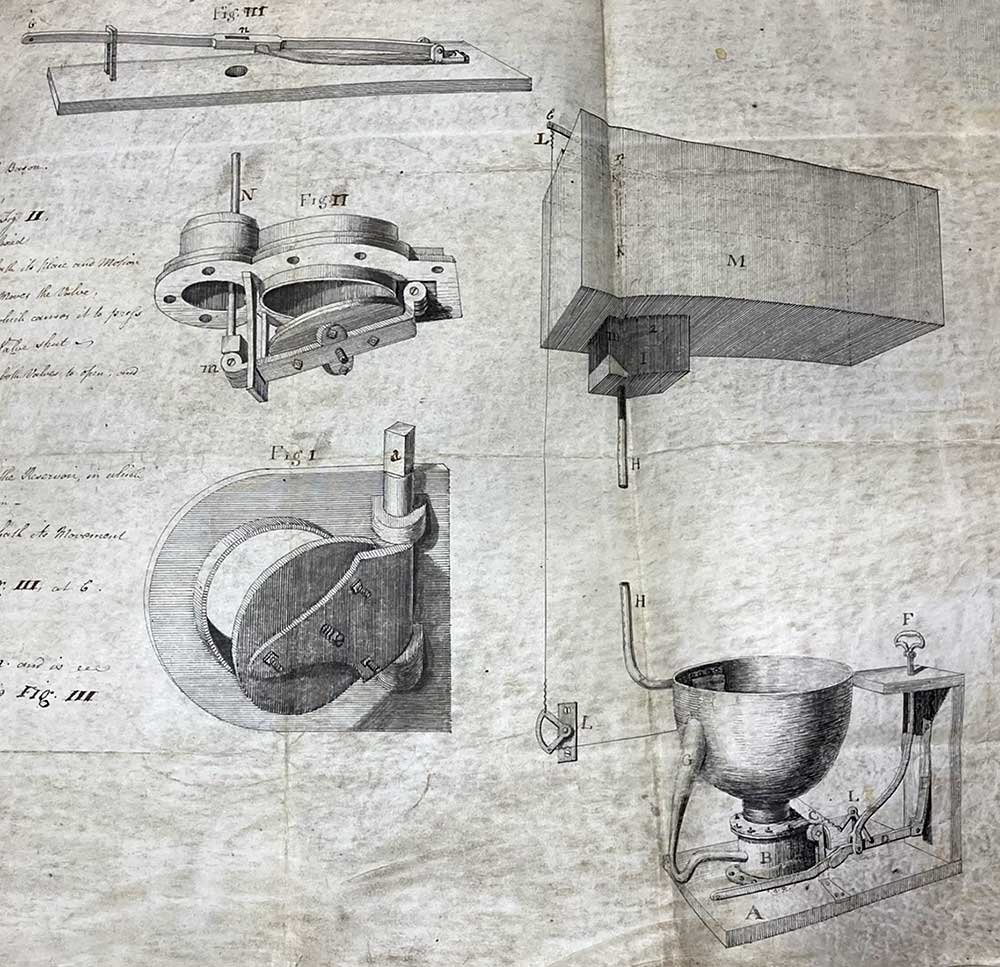
Registered design for a ‘self acting water closet’ by Thomas Ginn, a plumber from Hertford’
Date: 28 July 1840
Catalogue reference: View the record N/A in the catalogue
Thomas Ginn, a plumber from Hertford registered this design for a ‘self acting water closet’ in 1840. The 1839 Designs Registration Act gave people a simpler way to protect their intellectual property, and although it was intended for ‘decorative designs’ it was sometimes used by people like Thomas Ginn where the patent process might have been more appropriate.
Ginn's design featured a seat ‘hung with butts, the front standing up one inch above the riser and supported by a spring’. When the user sat down, the seat lowered and an iron bar (H) activated a system of levers and pulleys up to the cistern above. A valve (C) opened to release water into the hopper (E) and another valve (D) closed to keep the water in.
When the user stood up, the mechanism reversed so that the water in the hopper was released down the pipe (F) to flush away the waste.
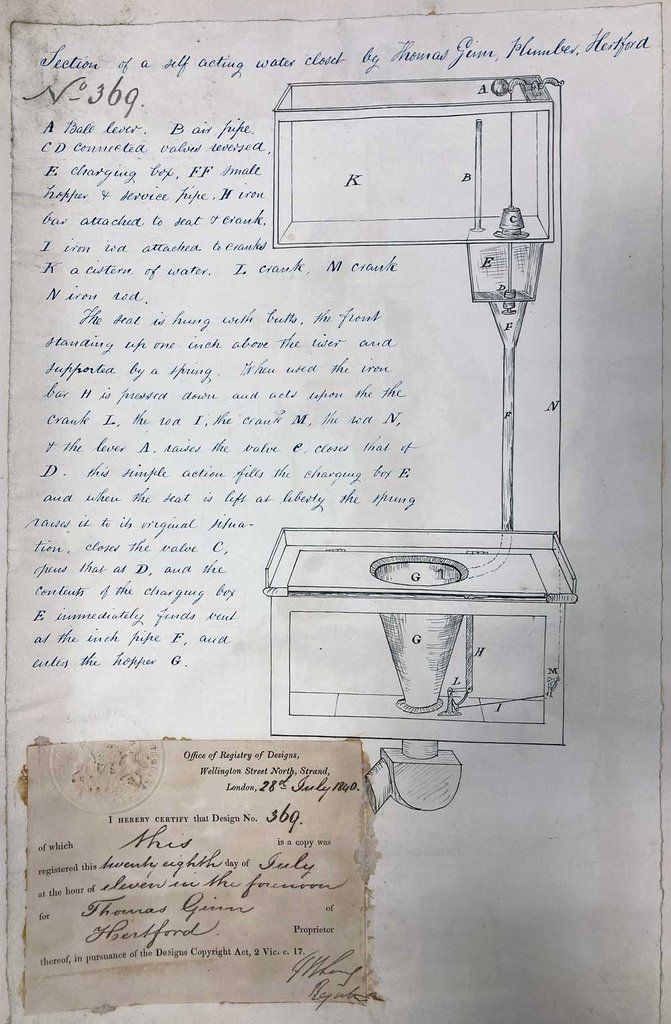
The 1851 Great Exhibition and Jennings’ patent for public flushing toilets
Date: 23 August 1852
Catalogue reference: View the record N/A in the catalogue
In 1852, Josiah George Jennings, a plumber and sanitary engineer born in Hampshire, designed a water closet specifically for use in railway stations, exhibition halls and other public spaces.
Jennings' patent number 14,273 described how the pan and trap were formed in one piece so that ‘there shall always be a certain quantity of water retained in the pan itself, in addition to that in the trap which forms the water-joint’.
The 1851 Great Exhibition in Crystal Palace included the installation of Jennings’ public toilets. There was a charge of one penny to use them – hence the euphemism ‘to spend a penny’ meaning to go to the toilet.
The exhibition saw over 800,000 people paying the penny charge, which covered not only access to the toilet but also to a towel, a comb and a shoe-shine.
Jennings' design is still recognisable as the basis of most modern flush toilets.
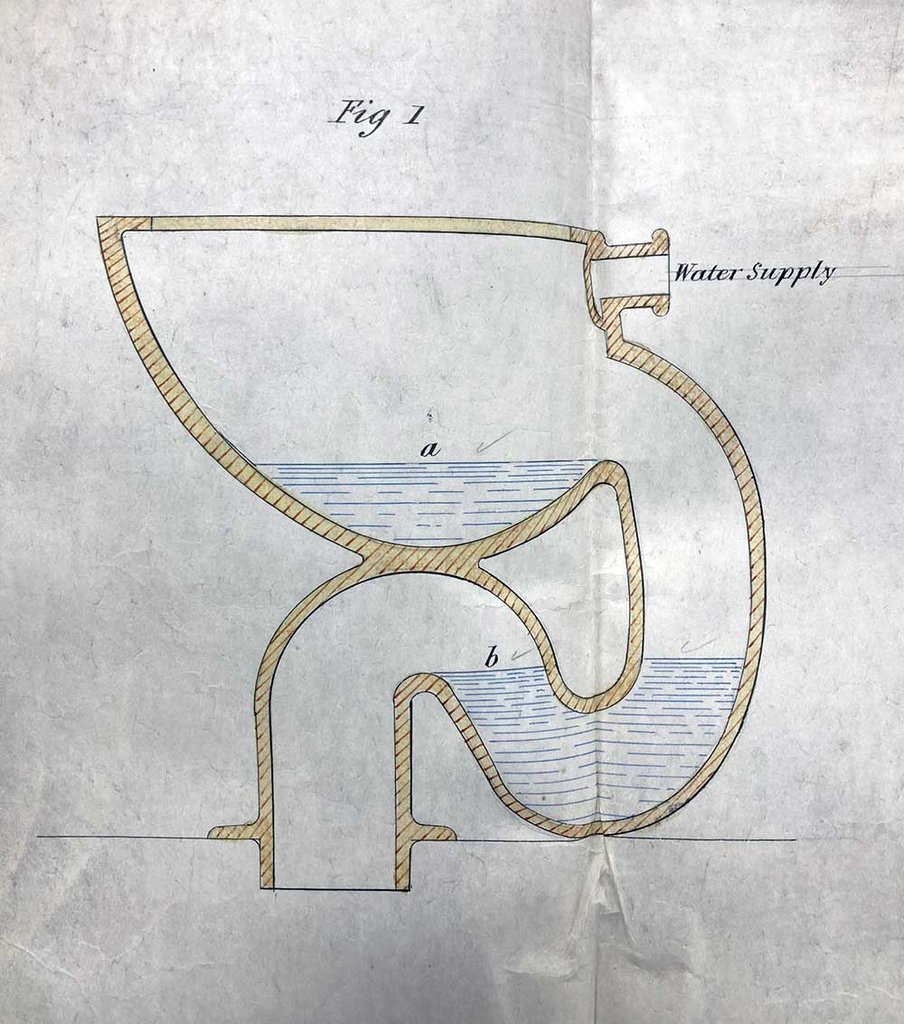
Torquay self-ventilating or deodorising water closet by William Thomas Symons
Date: 1873
Catalogue reference: View the record N/A in the catalogue
This design for ’The Torquay self ventilating or deodorising water closet’ was registered in 1873 by William Thomas Symons, a plumber from Redruth in Cornwall. He has submitted a photograph which indicates he had built a prototype, but it's not clear whether his design was ever manufactured at scale.
The accompanying text explains that the pipe at section 2 on the photograph will ‘provide means of escape for such effluvia as may arise from soil recently deposited, or, such as may come from or through the water of stench pipe no 3’ It will also ‘furnish a surface fully washable by the water falling from the basin no 1 which is not the case in the ordinary apparatus, which this is designed to supersede; the inventor regarding the said apparatus as the cause of nuisance and disease’.
Finally, it will ‘hide any fraction of soil which may not be fully carried away from the stench trap’.
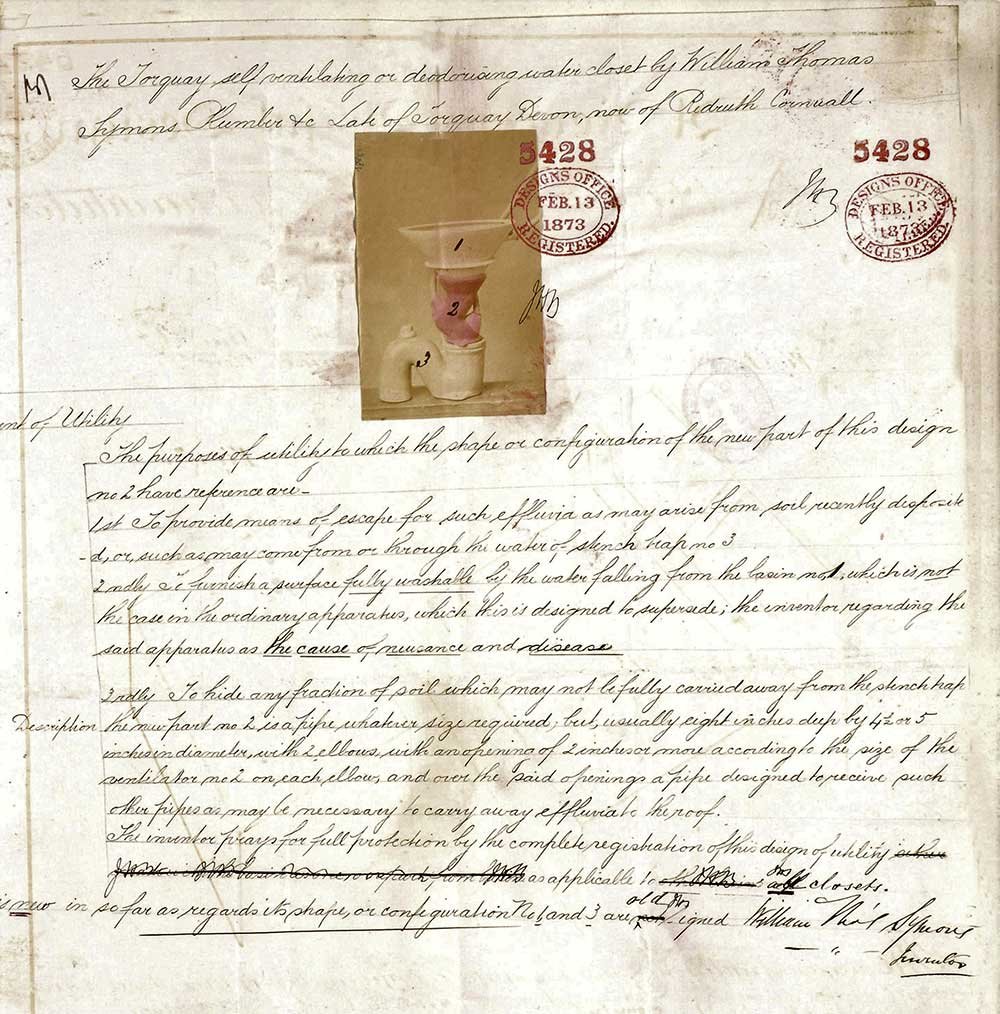
Ceramic toilet designs by John Smeaton & Sons
Date: 17 January 1887
Catalogue reference: View the record N/A in the catalogue
The Victorians liked even the most functional items to be decorative, as shown by these two designs for ceramic water closets. The ‘Nautilus’ [left] and ‘Amphora’ [right] designs were registered for copyright protection with the Stationers’ Hall in 1887 by John Smeaton & Sons of 56 Great Queen St., London.
The 1891 census shows John Smeaton (listed as ‘Smeeton’) age 40, still living in Great Queen St. His occupation is listed as a ‘Sanitary specialist’, and his 18-year-old son William as a ‘training sanitary specialist’.
Unfortunately, the following year, Smeaton, Son & Co. was listed as bankrupt in the London Gazette.
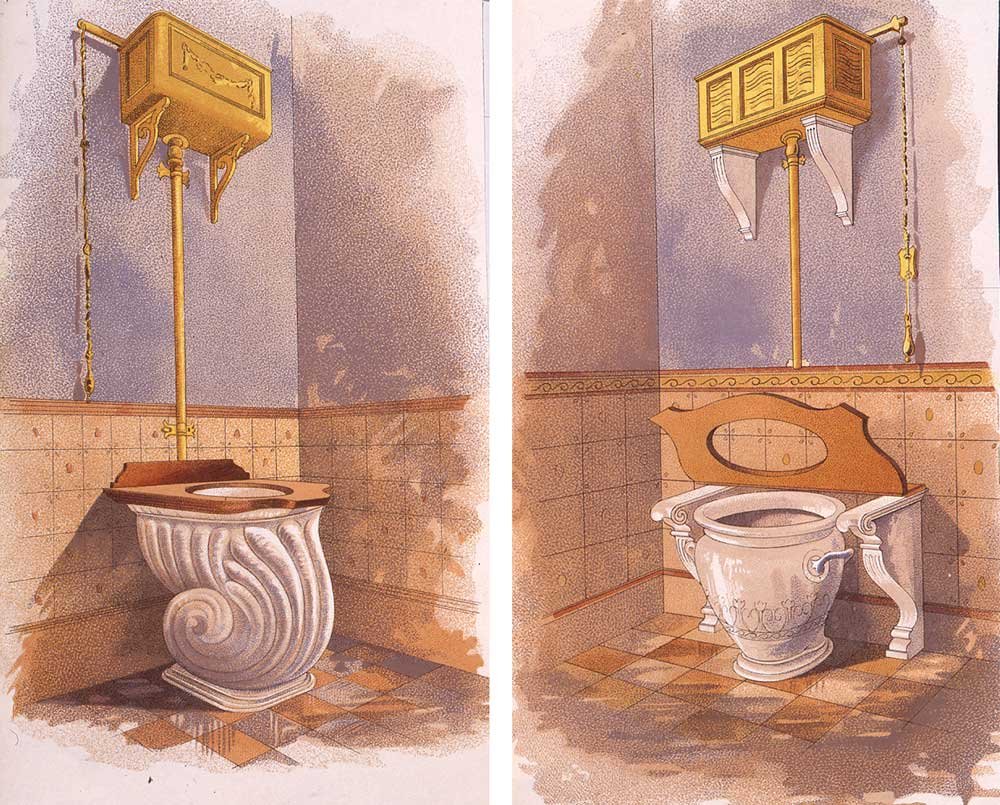
Thomas William Twyford’s ‘Deluge’ wash down closet basin
Date: 22 June 1888
Catalogue reference: View the record N/A in the catalogue
Thomas William Twyford (1849–1921) was one of the most successful sanitary ware manufacturers of the 19th century. This illustration of his ‘Deluge’ wash down closet basin was registered for copyright protection in June 1888.
Previously, Twyford had great success with three models of wash down water closets housed inside wooden cabinets: ‘The National’ in 1879, ‘The Crown’ in 1882 and ‘The Alliance’ in 1883.
In 1884 Twyford released his first freestanding earthenware WC, ‘The Unitas’. The advertising explained that ‘Unlike ordinary W.C. basins, it is not enclosed with woodwork, but is fully exposed, so that no filth, nor anything causing offensive smells can accumulate or escape detection.’
Twyford registered four patents for improvements to flush toilets between 1884 and 1888 as his business continued to grow. He exported world-wide and had showrooms in Australia, South Africa and Germany.
